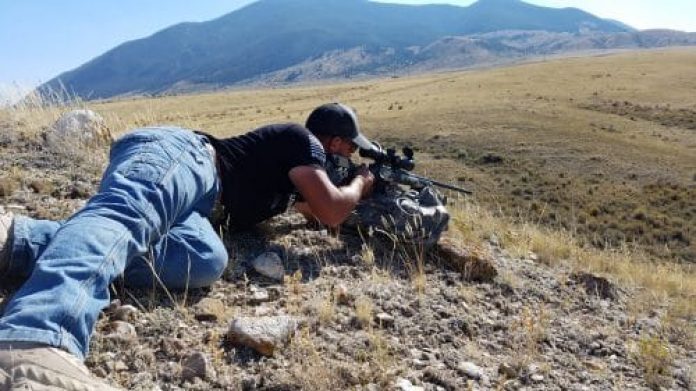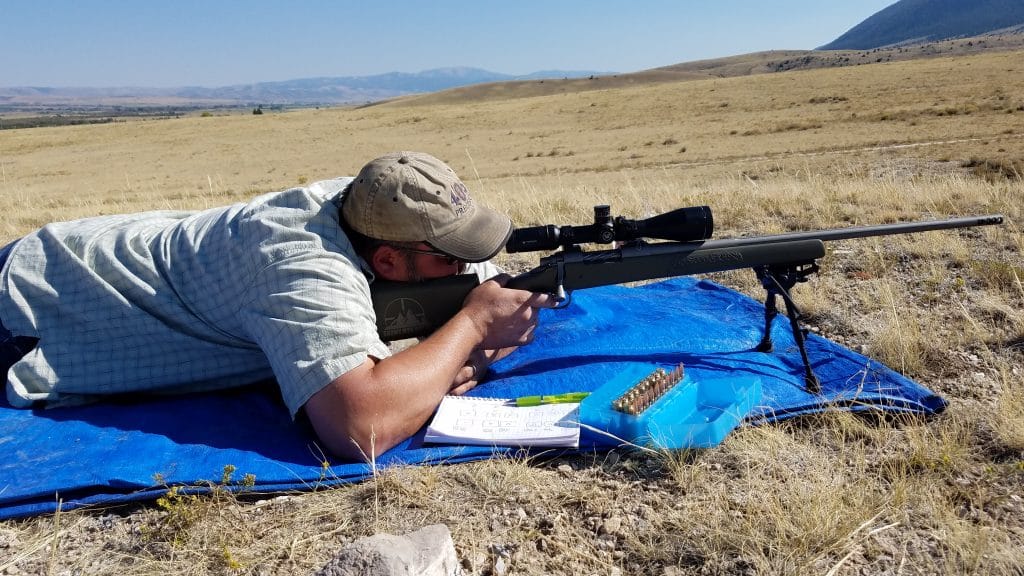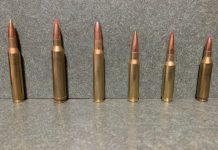
In our travels providing shooting classes and competitions, we often visit various shooting ranges across the US. We have found the one constant at these ranges is shooting benches.
You may ask, what’s wrong with a shooting bench? Absolutely nothing if you’re looking for a nice stable platform from which to do your load work or accuracy testing, or even to get a rough zero on your rifle. However, the use of a bench and some of the tools commonly found on one can lead to issues and habits that can actually hurt your shooting in the field.
If you pay close attention to the people using these benches you will see a variety of activities, from load work and bore sighting to shooting through a chronograph. You will also see people sighting in their rifles for hunting season. This is where using a bench becomes interesting.
Shooting benches have been around for a long time, and as I have previously stated if your goal is to shoot in a bench rest competition or develop a precision load they are a great tool. However, if your goal is to shoot an elk in the mountains, a bench has very little to offer. They can act as an Achilles heal with your habits and the tools you use.
A common tool you’ll see in use is a mechanical front rest and a rabbit eared rear rest. This combo is a favorite of the bench rest crowd and accuracy fanatics, and is a great set up for finding out the capability of your rifle. However, they are not field friendly.
Another tool you will find around shooting benches is a lead sled or similar device that is designed to not only help you keep your rifle steady but to also help eliminate recoil and aid the shooter in getting on target. Lots of you have probably seen one and I am sure a few of our readers either own one or have tried them because they seem like a sound idea at first glance. However, I have found them to be very detrimental to accuracy in the field.
The biggest reason these types of shooting aids are detrimental to your success in the field is simply because you won’t have access to them when you’re actually in the field. This seems like an obvious statement, but think about how many people you see sighting in their hunting rifles with this type of equipment and it starts to make a lot more sense.
The only way to effectively practice for the shots you will be presented with while hunting is to practice like you’re hunting, and the best way to practice for the field is to actually get out in the field. However, for those of you not lucky enough to live close to where you hunt, or at least have access to an area that would closely simulate that area, all is not lost. You can effectively practice at your local range by choosing to mimic the positions and situations that you commonly find yourself shooting from in the field.
The first thing you need to ask yourself when you step away from the bench is what kind of shooting you’re likely to encounter in the field. Below are a few questions to get the ball rolling.
Do you do most of your shooting prone and with a bipod?
Hunt from a tree stand or ground blind?
Do you often find yourself shooting from a sitting position using your body, a set of shooting sticks, or other shooting aids?
Or do you make a lot of your shots laying down and using your pack as a rest?
If you can answer any of the above questions you’re already on the right track to becoming a better marksman in the field. The next step is to do your best to mimic the positions you’ll most likely find yourself shooting from. It will become pretty evident that you are nowhere near as accurate as you were on the bench, however rather than becoming discouraged with this information put it to use and design your practice around getting better in each of the positons.
An important thing to remember while practicing is that the same basic fundamentals you use on the bench such as trigger control, shot sequence, and breathing should be in use when you find yourself in any other position.
An excellent way to practice this without sending hundreds of poorly placed projectiles down range is to simply get into position and dry fire your rifle. As you’re doing this, pay special attention to your trigger engagement and follow through to make sure the cross hairs of your scope remain in the same positon on the target both before and after you execute your shot. Once you have dry fired a sufficient number of rounds from each position and feel comfortable with your shot placement, it is time to send rounds down range. Make sure to take your time and concentrate on the quality of the shots versus the number of shots you take.
Just like in the field, your goal should be to place one well-practiced shot on target where it counts. However, it is important to note that you also need to practice for what happens if your first shot doesn’t find its mark, or if you need a follow-up shot for one reason or another.
So remember, although the bench has its uses stepping away from it allows you to incorporate realistic practice in your shooting. In turn you will find yourself more comfortable and more successful in the field this season!
















